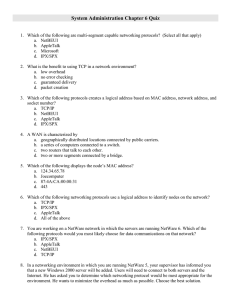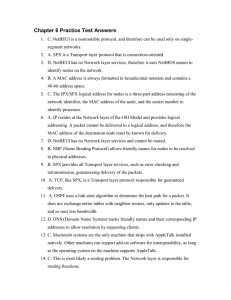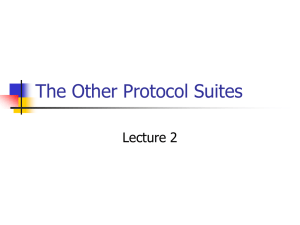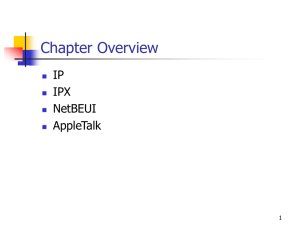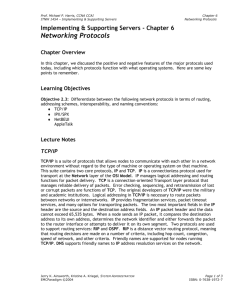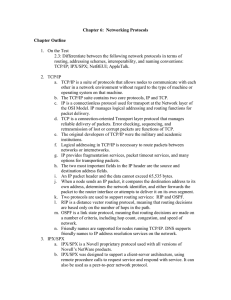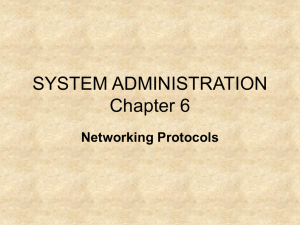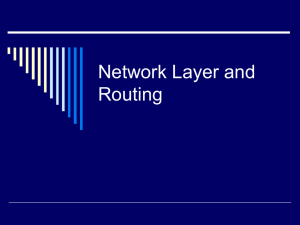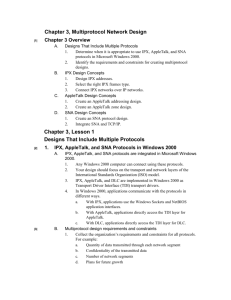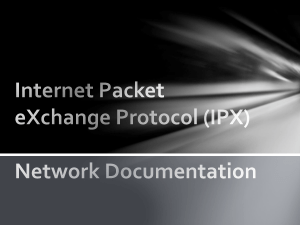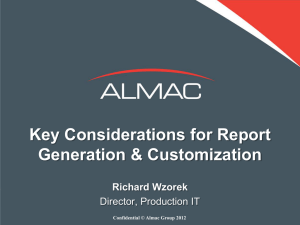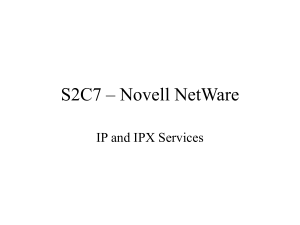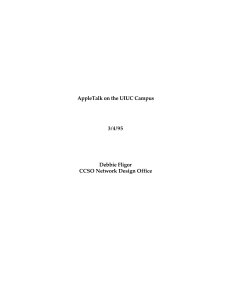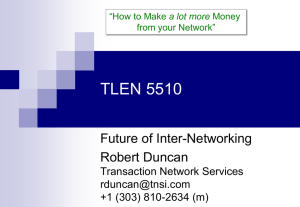Chapter 13
advertisement
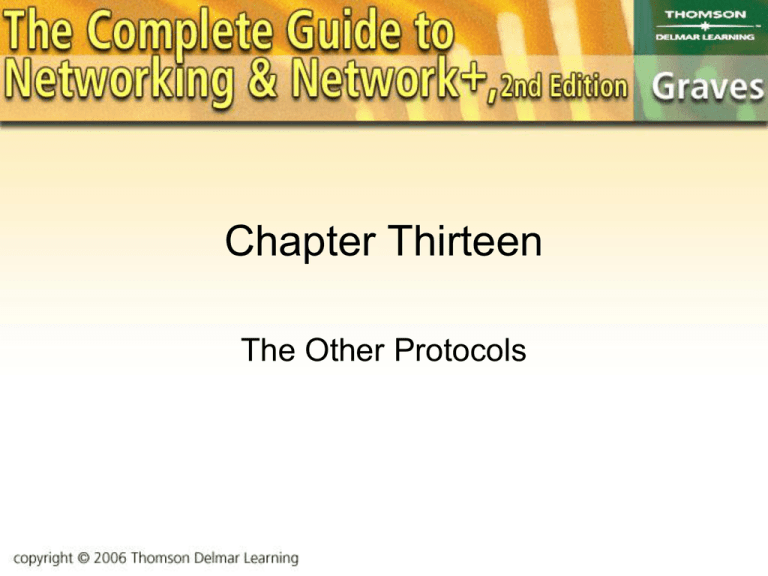
Chapter Thirteen The Other Protocols Objectives • You’ll get a brief overview of – IPX/SPX – NetBEUI – Appletalk • How each protocol handles addressing • The pros and cons of each protocol IPX/SPX • Internetwork Packet Exchange/Sequenced Packet Exchange – Developed by Xerox in the early 80s – Adopted and tweaked by Novell to become their protocol of choice in NetWare Addressing in IPX/SPX • 32-bit network address • MAC address of interface becomes host address • A socket number assigned to the process or application running on the device – This is NOT the same as the sockets discussed in the Transport layer. • The station address – The combined network/host address Configuring IPX/SPX • If no network number is statically assigned, the host will send out a broadcast looking for a SAP server. • The SAP server will assign an address. • Correct frame type is necessary in IPX. – Auto Detect usually works pretty well. Frame Types • 802.3 (Raw) – The typical Ethernet frame • 802.2 – An older frame type used by non-Ethernet protocols • Ethernet II • Ethernet SNAP Routing in IPS/SPX • If a packet isn’t addressed to the local network, the transmitting station will broadcast a RIP packet. • Available routers with access to the target network number respond with their node address and the number of hops to target. • Transmitting workstation picks the router with the fewest hops and transmits the packet. Pros and Cons of IPS • Pros – Light overhead on the individual workstations – Very easy to configure and hard to mess up • Cons – Very HEAVY overhead on the network as a whole – A limited number of hops prevents extremely large networks (like the Internet) NetBEUI • NetBIOS Enhanced User Interface – Developed by Microsoft for early versions of NT – A Layer 2 protocol – No longer supported by Microsoft • XP does not install NetBEUI by default, but the protocol can be added from the installation CD. Pros and Cons of NetBEUI • Pros – Easy to configure • All you need is to put all workstations on the same workgroup, but make sure they have different names. – Extremely fast with low overhead on network and workstations • Cons – Not routable AppleTalk • Developed by Apple Computer Corporation • Has a lot of similarities to TCP/IP – Layered functionality – A robust collection of related protocols • Moves data in datagrams Addressing in AppleTalk • Each host is assigned a node ID and an entity name. – The Node ID is similar to the IP address. – The entity name is similar to a NetBIOS name. • Networks are numbered (like in IPX/SPX) with 16-bit network numbers. • The Name Binding Protocol (NBP) resolves node IDs and entity names to MAC addresses. Some AppleTalk Protocols (1 of 2) • Datagram Delivery Protocol (DDP) provides point-topoint delivery of user data. • Routing Table Maintenance Protocol (RTMP) allows routers to dynamically build routing tables. • AppleTalk Echo Protocol (AEP) is Apple’s version of ICMP. • AppleTalk Transaction Protocol provides connectionoriented data delivery services. Some AppleTalk Protocols (2 of 2) • AppleTalk Data Streaming Protocol (ADSP) provides jitter-free delivery of multimedia. • AppleTalk Session Protocol (ASP) opens, maintains, and closes sessions.
